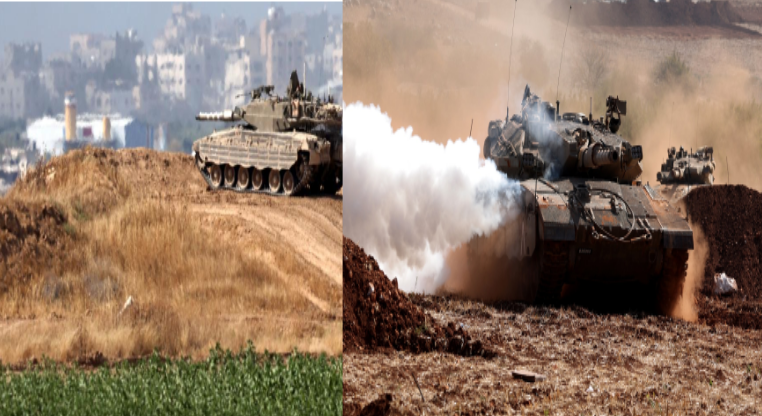289 dead as tank fire escalates in Southern Gaza. Get the latest updates on destruction, civilian impact, and global reaction to this deadly assault.
In the past 24 hours, Gaza has witnessed unprecedented devastation — not from a natural disaster, but from relentless Israeli airstrikes and intense tank fire. According to Geo News, at least 289 people have been killed, underscoring the immense scale of human suffering and destruction across southern Gaza. Civilian neighborhoods, vital medical facilities, and densely populated residential areas have been severely damaged as the bombardment continued throughout the day and night, leaving communities in shock and humanitarian needs at a critical level.
289 Dead as Tank Fire Escalates in Southern Gaza – The Incident
Israeli forces launched intensified ground operations, accompanied by heavy tank shelling and multiple airstrikes across several parts of Gaza. The escalating assaults triggered widespread panic, forcing thousands of families to abandon their homes in search of safety. Entire streets were obliterated into rubble, while exhausted rescue workers struggled desperately to reach survivors trapped beneath collapsed buildings. Independent reports confirmed that the offensive was among the deadliest in recent months, leaving behind a stark trail of devastation and destruction in southern Gaza.
Casualties and Victims
The total reported deaths stood at 289 though exact details about civilians and fighters remain under discussion. International outlets confirmed tragic details. At Nasser Hospital in Khan Younis more than 20 people were killed including doctors, patients, medical staff, rescue workers, and five journalists. This Nasser Hospital strike became a symbol of the humanitarian crisis in Gaza. Another double strike killed 15 people including four journalists who were covering the Gaza attacks. Overall international reports confirmed that hospitals and emergency staff were directly affected making the situation even more alarming.
Military and Official Response
The Israeli Defense Forces (IDF) acknowledged responsibility for the strike on Nasser Hospital but firmly denied intentionally targeting journalists or civilians. The IDF expressed regret over the unintended casualties and announced an internal investigation into the incident. However, leading humanitarian organizations and international press freedom groups have strongly rejected these explanations, emphasizing that medical facilities and journalists killed in Gaza are protected under international law and that such attacks constitute grave violations.

Global Outcry and Criticism
The attack brought strong criticism worldwide, with governments, rights groups, and humanitarian organizations condemning the strikes as a clear violation of international humanitarian law. Human rights advocates stressed that targeting medical facilities and journalists directly undermines the protection guaranteed under the Geneva Conventions. The Committee to Protect Journalists highlighted that nearly 192 journalists have been killed in Gaza since the beginning of the conflict, while The Guardian reported the number at 193, reflecting the alarming dangers faced by media workers. International watchdogs emphasized that Gaza has now become the most dangerous place in the world for reporters, a crisis that threatens press freedom globally. At the same time, the strike on Nasser Hospital — one of the largest medical facilities in southern Gaza — has pushed health services to the brink of collapse. Ambulances can no longer operate safely, doctors struggle without basic medicines or electricity, and patients requiring urgent surgeries are left without life-saving treatment, deepening the humanitarian catastrophe.
Humanitarian Crisis in Gaza
The destruction of medical centers has pushed Gaza’s already fragile healthcare system to the brink of total collapse. Thousands of injured civilians now have little or no access to urgent treatment, while hospitals that remain functional operate far beyond capacity with almost no medical supplies. Families are left struggling to survive without food, clean water, or safe shelter as bombardments continue. Children are the most vulnerable, suffering not only from physical injuries but also from deep psychological trauma, malnutrition, and the rapid spread of disease in overcrowded shelters. International aid agencies warn that the humanitarian crisis in Gaza is worsening each passing day, with no sign of relief, as fuel shortages cripple electricity, ambulances remain unable to reach patients, and international calls for a ceasefire go unanswered. The collapse of basic services threatens to unleash a broader public health disaster across the region.
International Response
The United Nations called for an immediate end to attacks on hospitals and reiterated its demand that all parties respect international humanitarian law and protect civilians. The European Union expressed deep concern over the targeting of medical facilities, urging Israel to ensure that hospitals and aid workers remain safe. The United States voiced concern about the mounting civilian death toll in Gaza but once again emphasized Israel’s right to self-defense — a position that drew sharp criticism from humanitarian groups, who accused Washington of turning a blind eye to war crimes. Global press freedom organizations condemned the killing of journalists in Gaza as “unacceptable,” warning that attacks on reporters undermine truth and accountability in conflict zones. They demanded an independent investigation and accountability under international law, stressing that impunity for such crimes would further endanger journalists worldwide. International human rights advocates also warned that the erosion of protections for civilians could set a dangerous precedent for future conflicts.
Summary: 289 Dead as Tank Fire Escalates in Southern Gaza
The headline by Geo News, “Ground Shaken, Tank Fire, and 289 Lives Lost,” captures the extreme devastation caused by the Gaza attacks. With hospitals destroyed, journalists killed in Gaza, and hundreds of civilian deaths in Gaza, the tragedy highlights the deepening humanitarian crisis in Gaza. The Israeli airstrikes and Nasser Hospital strike have drawn international response and global condemnation. For Gaza’s people survival is now a daily struggle as military operations and destruction in southern Gaza continue without pause.

